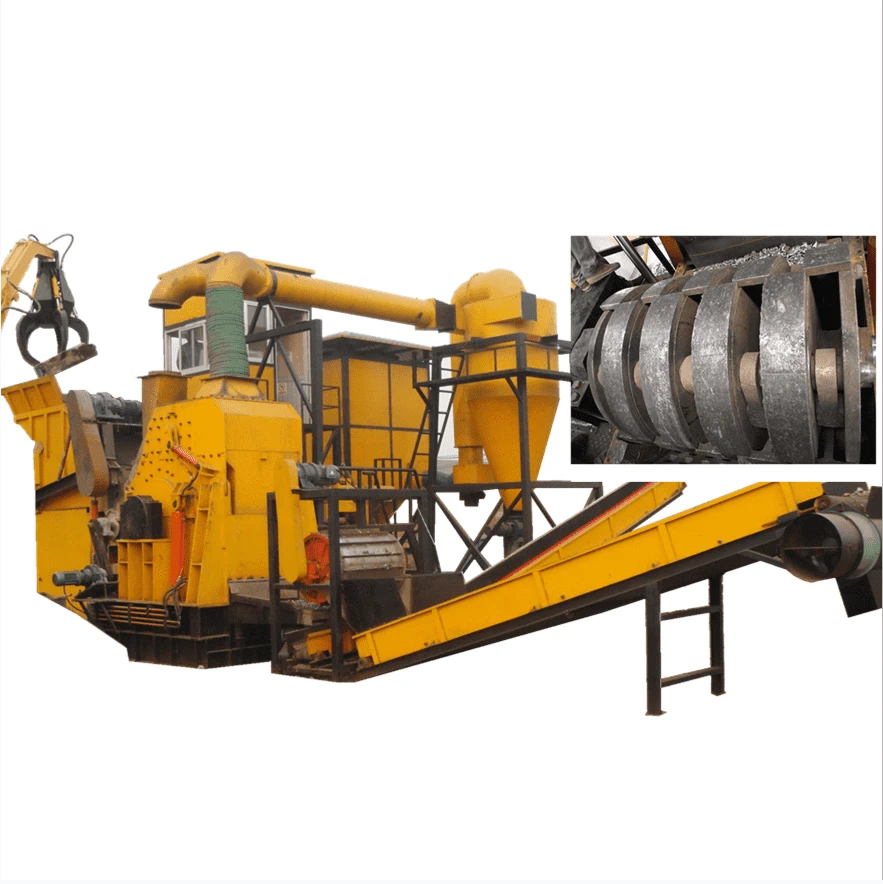

Nov . 17, 2024 07:09 Back to list
Non-Ferrous Metal Separation Techniques and Importance
The separation of non-ferrous metals is an increasingly significant process in waste management and recycling industries. Non-ferrous metals, which include aluminum, copper, lead, zinc, and nickel, do not contain iron and hence are not magnetic. This characteristic makes them essential materials across various sectors due to their unique properties, such as low density, high conductivity, and resistance to corrosion. As the demand for these metals continues to grow, the need for efficient separation techniques has become paramount.
Non-Ferrous Metal Separation Techniques and Importance
Another effective method for non-ferrous metal separation is eddy current separation. This technology uses a rotating magnetic field to induce electric currents in non-ferrous metals, causing them to repel away from the other materials. This innovative technique allows for high purity levels of separated metals and is especially effective for aluminum and copper, which are common in electronic waste and automotive scrap. Eddy current separators are increasingly utilized in modern recycling facilities due to their ability to efficiently process large volumes of material.

Chemical methods for non-ferrous metal separation, such as hydrometallurgical and pyrometallurgical processes, also play a critical role, especially when mechanical methods are less effective. Hydrometallurgy involves the use of aqueous solutions to selectively dissolve metals and is commonly used for copper recovery from ores and concentrates. Pyrometallurgy, on the other hand, uses high temperatures to melt metals and separate them from impurities; this method is beneficial for lead and zinc, which often require high-temperature processes for effective extraction.
Recycling non-ferrous metals is not only economically beneficial but also environmentally crucial. The extraction of raw materials through mining operations poses significant ecological threats, including habitat destruction, water pollution, and high energy consumption. In contrast, recycling non-ferrous metals substantially reduces greenhouse gas emissions and lowers energy usage. For example, recycling aluminum saves up to 95% of the energy required to produce new aluminum from bauxite ore. Consequently, promoting effective separation and recycling practices is vital for developing a sustainable future.
As the world increasingly focuses on sustainability and resource conservation, advancements in non-ferrous metal separation technologies continue to emerge. Innovations such as automated sorting systems, which leverage artificial intelligence and machine learning, are gaining traction. These systems analyze and sort materials with high precision, optimizing separation processes and reducing contamination rates.
In conclusion, the separation of non-ferrous metals is a crucial aspect of recycling and waste management that serves both environmental and economic purposes. The techniques employed, ranging from mechanical to chemical methods, play a pivotal role in ensuring that valuable materials are recovered and reused. As technology evolves, the efficiency of non-ferrous metal separation is likely to improve, paving the way for a more sustainable and circular economy. By prioritizing these practices, society can contribute to a greener planet while also harnessing the benefits of recycling valuable non-ferrous metals.
Latest news
Troubleshooting Common Eddy Separator Problems
NewsJul.04,2025
The Role of Metal Recycling Plants in Circular Economy
NewsJul.04,2025
The Impact of Recycling Line Pickers on Waste Management Costs
NewsJul.04,2025
Safety Features Every Metal Shredder Should Have
NewsJul.04,2025
How Industrial Shredders Improve Waste Management Systems
NewsJul.04,2025
How Cable Granulators Contribute to Sustainable Recycling
NewsJul.04,2025